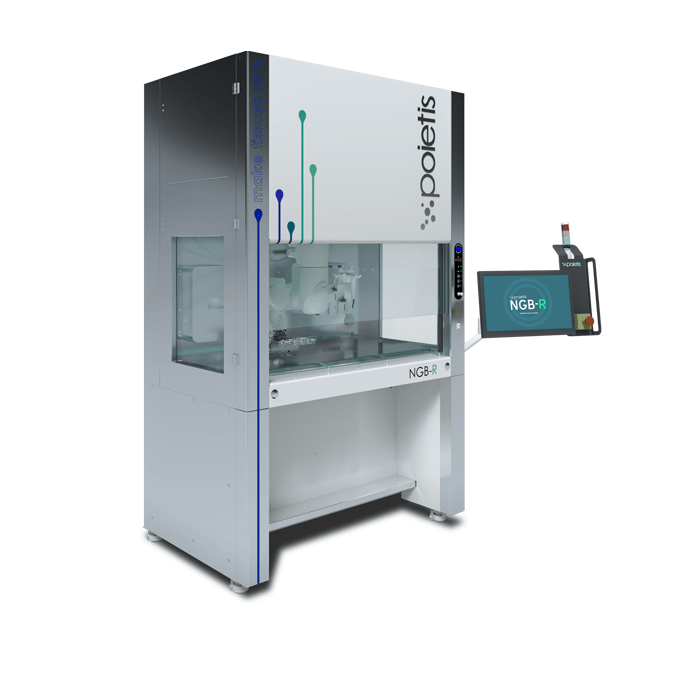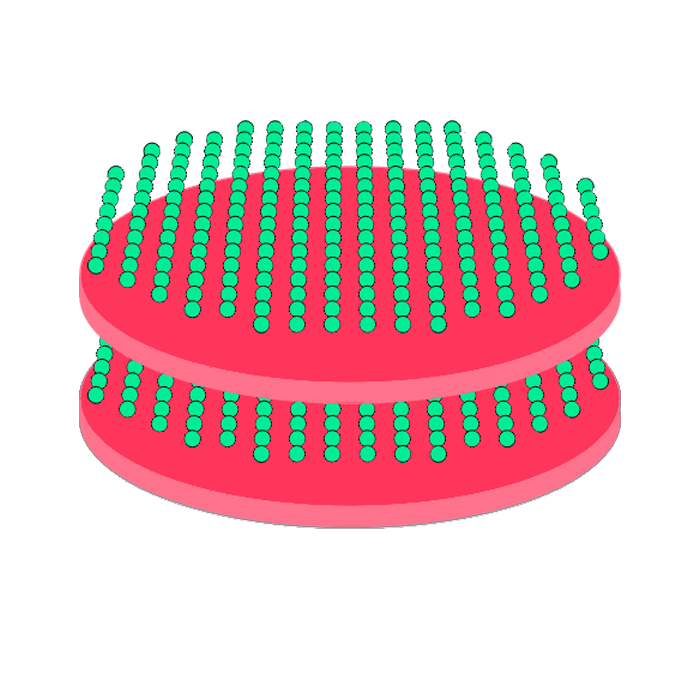
Poietis NGB-R
BioprintingExtrustion Bioprinters

Innovative laser-assisted bioprinting and 2nd harmonic generation microscopy methods were combined to produce skin equivalents in less than three weeks and provide advanced 3D-structural and noninvasive information on the fibrillar bioprinted skin networks obtained after treatment with cosmetic ingredients, respectively.
Two different printing technologies were combined to print 3D skin equivalents: a microvalve technology to print collagen layers and laser-assisted bioprinting to deposit cell patterns.
A synergistic complex of two peptides (acetyl tetrapeptide 9 & 11) targeting syndecan-1 and lumican for epidermal and dermal strengthening was supplied during the 18 days of skin printing and maturation. The skin architecture was then analyzed by confocal microscopy associated with a multiphoton laser to generate a 2nd harmonic signal specific to fibrillar collagen and keratin without exogenic staining.
3D-stack image acquisition made it possible to generate a 3D reconstruction of the entire bioprinted skin and reveal particularly the bioprinted skin structure and demonstrated that the peptide complex improves the density and organization of the extracellular collagen fibers in the upper part of the 3D bioprinted dermis.
See attached Application note for complete procedure used.
